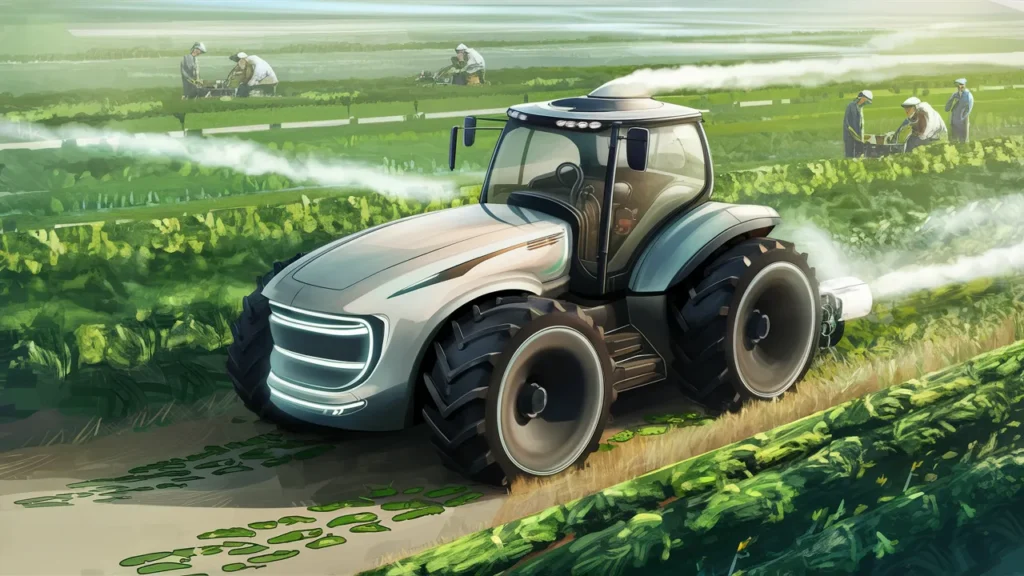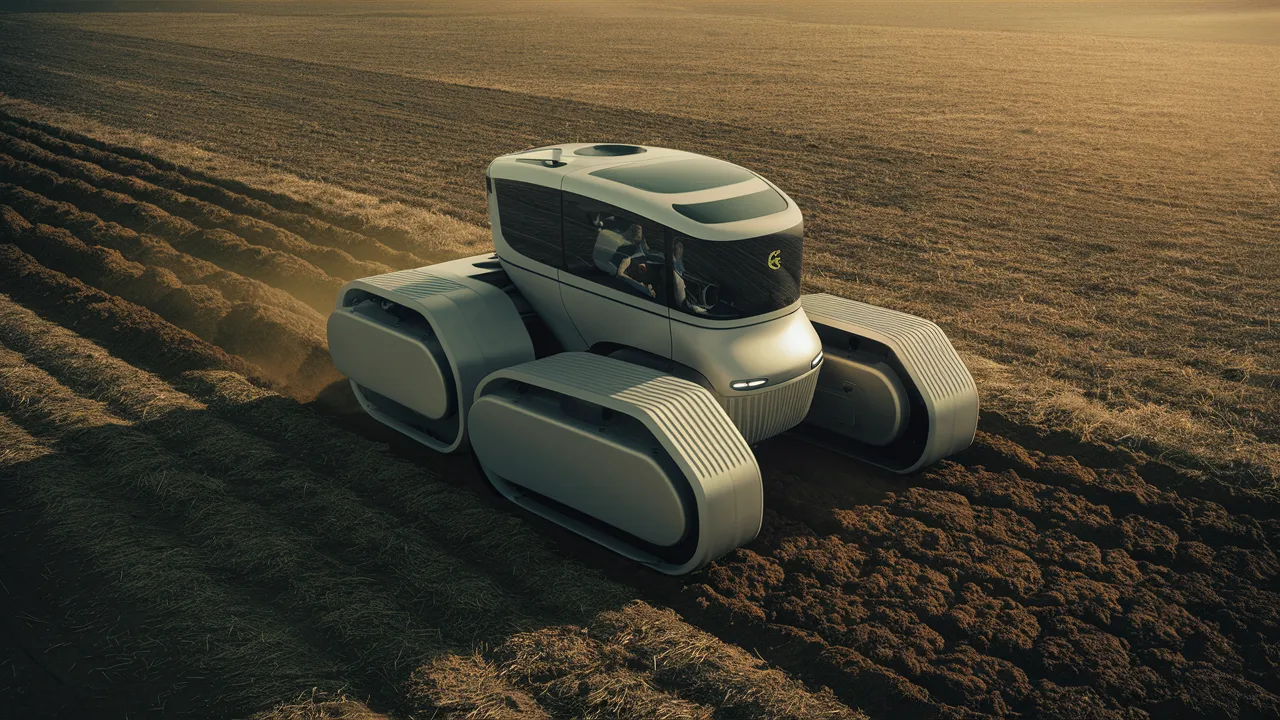In the ever-evolving landscape of agriculture, the design of tractors stands at the forefront of innovation, offering a gateway to a quieter and cleaner future for farming practices. As integral workhorses in agricultural operations, tractors play a pivotal role not only in enhancing efficiency but also in addressing the pressing concerns surrounding noise pollution and emissions.
In response to an increasing awareness of environmental impact, industry professionals are spearheading initiatives to revolutionize tractor design, prioritizing sustainability without compromising productivity.
Within the realms of agricultural engineering and environmental research, a paradigm shift is underway towards quieter and cleaner agricultural practices. The imperative to reduce noise levels and curb harmful emissions has catalyzed a new wave of technological advancements aimed at redefining tractor functionality.
As we delve into the intricate mechanisms that underpin these enhancements, it becomes evident that every bolt, every component plays an instrumental part in shaping a greener horizon for agriculture.
The narrative now unfolds with precision and purpose as tractor manufacturers, technicians, and stakeholders converge on a mission to set new standards for eco-conscious farming solutions. Join us on this enlightening journey as we unravel the layers of this transformative tractor evolution—a symphony orchestrated not by loud engines but by whispers of sustainable progress.
Importance of Noise Reduction in Tractor Design.
In the realm of agricultural machinery, noise reduction stands as a crucial aspect of improving working conditions for operators and lessening the impact on nearby communities. By employing sound insulation materials strategically within tractor designs, manufacturers can mitigate the loudness generated during operation.
Imagine a tractor gliding across a field with a gentle hum instead of a deafening roar, promoting not only peace for those operating the machinery but also reducing noise pollution levels in rural areas where tranquility is cherished.
Furthermore, focusing on designing efficient exhaust systems represents another avenue toward achieving quieter agricultural practices. Engine noise is often a primary contributor to the disruptive sounds emanating from tractors during operation.
Through optimizing exhaust systems to minimize engine noise emissions effectively, tractor manufacturers can contribute to creating a more serene environment for operators and residents alike. Picture a community where farmers go about their work without disturbing the natural symphony of chirping birds and rustling leaves.

Implementing these noise-reducing strategies in tractor design underscores a commitment to environmental stewardship and sustainable agriculture practices.
As innovation continues to drive technological advancements in this sector, prioritizing noise reduction becomes not just an option but an imperative for fostering harmony between modern farming activities and their surrounding ecosystems.
By recognizing the significance of minimizing noise pollution through thoughtful engineering solutions, the agricultural industry moves closer to achieving its goal of quieter, cleaner operations that benefit both people and nature simultaneously.
Strategies for Emission Control in Tractor Design.
In the realm of agricultural machinery, the adoption of strategies for emission control is paramount in mitigating the environmental impact of tractor operations. One key approach involves leveraging advanced catalytic converters within tractor engines.
By incorporating these sophisticated emission control devices, harmful pollutants like nitrogen oxides and particulate matter can be significantly reduced, aligning with stringent emissions standards.
For instance, implementing a selective catalytic reduction (SCR) system can help convert harmful nitrogen oxides into nitrogen and water vapor, thereby enhancing the overall environmental friendliness of tractors.
Furthermore, the choice of fuel types plays a crucial role in emission control efforts. Opting for low-emission alternatives such as biodiesel or embracing electric powertrains represents proactive steps toward reducing the carbon footprint associated with agricultural activities.
Biodiesel, derived from renewable sources such as vegetable oils or animal fats, offers a sustainable substitute for traditional diesel fuels, promoting cleaner combustion and lower emissions output. Similarly, the shift towards electric powertrains not only diminishes greenhouse gas emissions but also contributes to quieter operation due to the absence of combustion-related noise.

By combining advanced catalytic converter technology with low-emission fuel choices like biodiesel or electric powertrains, tractor manufacturers can achieve significant reductions in environmental pollutants released during agricultural practices.
These strategic approaches not only align with global sustainability goals but also underscore a commitment to quieter and cleaner agriculture through innovative tractor design solutions that prioritize both efficiency and eco-consciousness.
Technological Advancements Driving Cleaner Agriculture.
Precision agriculture technologies have revolutionized the way tractors operate, enabling farmers to optimize their fields with higher efficiency. Through the use of GPS guidance systems and sensors, tractors can now precisely apply fertilizers and pesticides only where needed, reducing excess usage and minimizing environmental impact.
By implementing these technologies, farmers not only improve crop yields but also contribute to cleaner agriculture by decreasing the amount of chemicals released into the environment.
One notable example of precision agriculture in action is variable rate technology (VRT), which allows tractors to adjust application rates based on real-time data about soil characteristics and crop requirements.
This targeted approach minimizes waste and ensures that resources are used effectively, resulting in reduced fuel consumption and emissions associated with excessive chemical applications. By integrating VRT into tractor design, manufacturers can support sustainable farming practices while enhancing overall agricultural productivity.

Furthermore, the adoption of autonomous driving features in modern tractors has streamlined farming operations while reducing carbon footprints. Autonomous tractors equipped with artificial intelligence systems can work continuously without human intervention, optimizing routes for minimal soil compaction and fuel consumption.
This hands-free operation not only enhances operational efficiency but also decreases greenhouse gas emissions by eliminating unnecessary idling or overlapping passes in the field. As tractor manufacturers continue to invest in autonomous technologies, the future of cleaner agriculture looks promising with reduced environmental impacts across farming practices.
Role of Agricultural Engineers in Sustainable Tractor Design.
Agricultural engineers play a pivotal role in advancing sustainable tractor design by collaborating with environmental researchers to ensure that modern machinery aligns with eco-friendly standards and regulations.
By working together, engineers and researchers can integrate cutting-edge technologies that reduce noise pollution and emissions while enhancing overall tractor performance.
For instance, agricultural engineers may leverage the expertise of environmental scientists to optimize engine designs for cleaner combustion processes, resulting in reduced carbon emissions and improved air quality within farming communities.
In addition to regulatory alignment, agricultural engineers are tasked with developing innovative solutions for energy-efficient propulsion systems in tractors.
Through the use of advanced materials, aerodynamic design strategies, and precision engineering techniques, these professionals can create more environmentally friendly tractors that consume less fuel and produce lower levels of harmful exhaust gases.

By implementing novel propulsion concepts like hybrid powertrains or electric motors, agricultural engineers pave the way for greener and more sustainable agricultural practices that benefit both the environment and farm operators.
Furthermore, agricultural engineers focus on optimizing tractor designs to operate efficiently while minimizing their environmental impact. This involves integrating emerging technologies such as precision agriculture tools that enable real-time monitoring of soil conditions and crop health.
By leveraging data-driven insights provided by these technologies, engineers can fine-tune tractor operations for maximum efficiency, reducing fuel consumption and emissions.
Through continuous research and development efforts guided by sustainability principles, agricultural engineers drive progress in tractor design towards quieter, cleaner agriculture that is both economically viable and ecologically responsible.
Challenges and opportunities.
Challenges and opportunities in quieter, cleaner tractor innovation pose significant considerations for the agricultural industry. Tractor manufacturers face the challenge of overcoming cost barriers related to integrating noise reduction technologies into their designs.
While these technologies are crucial for promoting quieter environments and enhancing operator comfort, the initial investment required can be substantial. This financial hurdle often necessitates careful planning and strategic resource allocation to ensure the adoption of sustainable practices without compromising operational efficiency.
On the flip side, investing in alternative fuel research presents a promising opportunity for driving advancements in eco-conscious tractor design. Exploring alternatives such as biofuels or electrification not only aligns with sustainability goals but also contributes to reducing overall carbon emissions from agricultural operations.

By seizing these opportunities, tractor manufacturers can position themselves at the forefront of environmentally friendly practices while meeting increasingly stringent regulatory requirements aimed at curbing greenhouse gas emissions within the sector.
For instance, companies that embrace research and development initiatives focused on alternative fuels may gain a competitive edge by offering innovative solutions that cater to an environmentally conscious consumer base.
Additionally, collaborating with researchers and industry experts specializing in eco-friendly technologies can provide valuable insights to navigate challenges effectively while leveraging market trends toward sustainability-driven innovations in tractor design.
By strategically balancing cost considerations with long-term benefits, tractor manufacturers can pioneer transformative changes that revolutionize agricultural machinery for a greener future.
Future Prospects: Enhancing Agricultural Sustainability through Advanced Designs.
Interdisciplinary collaboration is at the forefront of revolutionizing tractor design to align with sustainable agricultural practices. By merging the technical expertise of agricultural engineers with a strong environmental conscience, the industry can pave the way for next-generation tractors that prioritize efficiency and eco-friendliness.
For instance, integrating sensor technologies in tractor designs not only enhances precision in field operations but also promotes resource optimization, reducing waste and emissions simultaneously. This synergy between engineering prowess and environmental awareness sets a solid foundation for advancing the sustainability agenda in agriculture.
As research and development efforts continue to unfold, the focus remains steadfast on mitigating noise pollution and controlling emissions in tractor operations. Innovations such as hybrid electric powertrains are poised to drive transformative changes within agricultural machinery.
These advancements not only reduce carbon footprints but also enhance operational efficiency, underscoring a shift towards cleaner and quieter farming practices. Moreover, emerging technologies like artificial intelligence hold immense promise in optimizing tractor performance while minimizing environmental impacts by modulating power output based on real-time field conditions.

Looking ahead, the trajectory of sustainable tractor design points towards an era where energy-efficient propulsion systems will be standard practice rather than exception. The integration of renewable energy sources like solar panels into tractor structures showcases a commitment to greener solutions.
Furthermore, advancements in materials science offer opportunities for designing lighter yet durable components, enhancing fuel efficiency without compromising performance. As the industry embraces these cutting-edge innovations, the vision of quieter, cleaner agriculture driven by state-of-the-art tractors draws closer to reality.
In conclusion, the future prospects for enhancing agricultural sustainability through advanced designs are bright and promising. By capitalizing on interdisciplinary approaches that amalgamate technological ingenuity with environmental stewardship, we can foster a new generation of tractors that embody efficiency, eco-consciousness, and productivity.
Continued dedication to research-driven solutions focused on noise reduction and emissions control will undoubtedly reshape the landscape of modern farming equipment, ushering in an era where innovation meets sustainability harmoniously in every field tilled by these revolutionary machines.
Conclusion: Pioneering Quieter, Cleaner Agriculture Through Tractor Innovation.
In the realm of agricultural engineering, the development and implementation of advanced technologies have propelled the industry towards a future where quieter, cleaner tractors reign supreme.
The merging of precision agriculture techniques with innovative design approaches has paved the way for a significant reduction in noise pollution and harmful emissions within farming communities. By prioritizing sustainable practices and eco-conscious solutions, tractor manufacturers and engineers are steering agriculture towards a greener horizon.
As tractor design continues to evolve, it is imperative that industry professionals remain steadfast in their commitment to revolutionize agricultural machinery. The collaborative efforts between agricultural engineers, environmental researchers, and technicians are crucial in driving forward initiatives aimed at enhancing agricultural sustainability through progressive designs.
By embracing cutting-edge innovations and staying abreast of emerging trends in noise reduction and emissions control, the path to a harmonious coexistence between technology-driven farming practices and environmental stewardship becomes increasingly tangible.
Ultimately, the marriage of technical expertise with ecological mindfulness sets the stage for a future where quieter, cleaner agriculture is not just an aspiration but a tangible reality.









